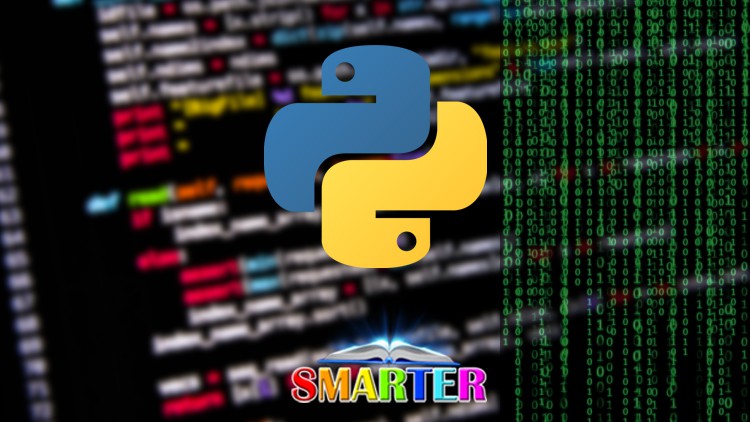
Master Python tricks, tactics, methods and Get ready for exams, tests and interviews
What you will learn
Most common and comprehensive Python tests and interviews
Professional Python questions with detailed answers
Python Questions and Answers for Object Oriented Programming[OOP] and Classes and Objects
Python Questions and Answers – Operator Overloading
Python Questions and Answers – Encapsulation / Polymorphism / Inheritance / Exception Handling
Python Questions and Answers – Math / Datetime Module/ Random module / Pickle Module / Turtle Module
Python Questions and Answers – Operating System / Sys Module
Python Multiple Choice Questions on Files / Regular Expressions /
Python Question and Answers – Built-in Functions – Function / Argument Passing, Variables and Recursion
Python Questions and Answers – Global vs Local Variables – Recursion– Shallow copy vs Deep copy
Mapping Functions / – Functional Programming Tools / Python Dictionary / List Comprehension / Tuples / Sets / Data structure / Matrix List Comprehension /
Python MCQ on While and For Loops
Python MCQ on Strings
Variable Names & Operators / Data Types & Numeric Types Core Data types / Bitwise & Boolean/ Precedence and Associativity / Formatting & Decorators
Description
Professional Python Questions and detailed Answers
Master Python tricks, tactics, methods and Get ready for exams, tests and interviews
Python is an interpreted high-level general-purpose programming language. Its design philosophy emphasizes code readability with its use of significant indentation. Its language constructs as well as its object-oriented approach aim to help programmers write clear, logical code for small and large-scale projects.
Python is dynamically-typed and garbage-collected. It supports multiple programming paradigms, including structured (particularly, procedural), object-oriented and functional programming. It is often described as a “batteries included” language due to its comprehensive standard library.
Guido van Rossum began working on Python in the late 1980s, as a successor to the ABC programming language, and first released it in 1991 as Python 0.9.0.Python 2.0 was released in 2000 and introduced new features, such as list comprehensions and a cycle-detecting garbage collection system (in addition to reference counting). Python 3.0 was released in 2008 and was a major revision of the language that is not completely backward-compatible. Python 2 was discontinued with version 2.7.18 in 2020
You will learn and practice for:
Variable Names & Operators
Basic Operators Core
Data Types & Numeric Types
Core Data types Numeric Types
Precedence and Associativity in Python
Bitwise & Boolean
Formatting & Decorators in Python
While and For Loops
Strings
Lists
List Comprehension
Matrix List Comprehension
Tuples
Python Sets
Python Dictionary
Built-in Functions
Function
Argument Passing, Variables and Recursion
Global vs Local Variables
Recursion
Shallow copy vs Deep copy
Mapping Functions
Functional Programming Tools
Mapping Functions
Modules Python
Math
Datetime Module
Random module
Pickle Module
Turtle Module
Operating System
Sys Module
Regular Expressions
Files
Classes and Objects
Operator Overloading
OOPs
Encapsulation
Polymorphism
Inheritance
Exception Handling
SMARTER ACADEMY
Content